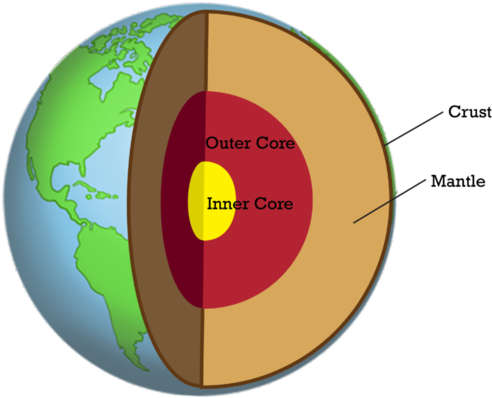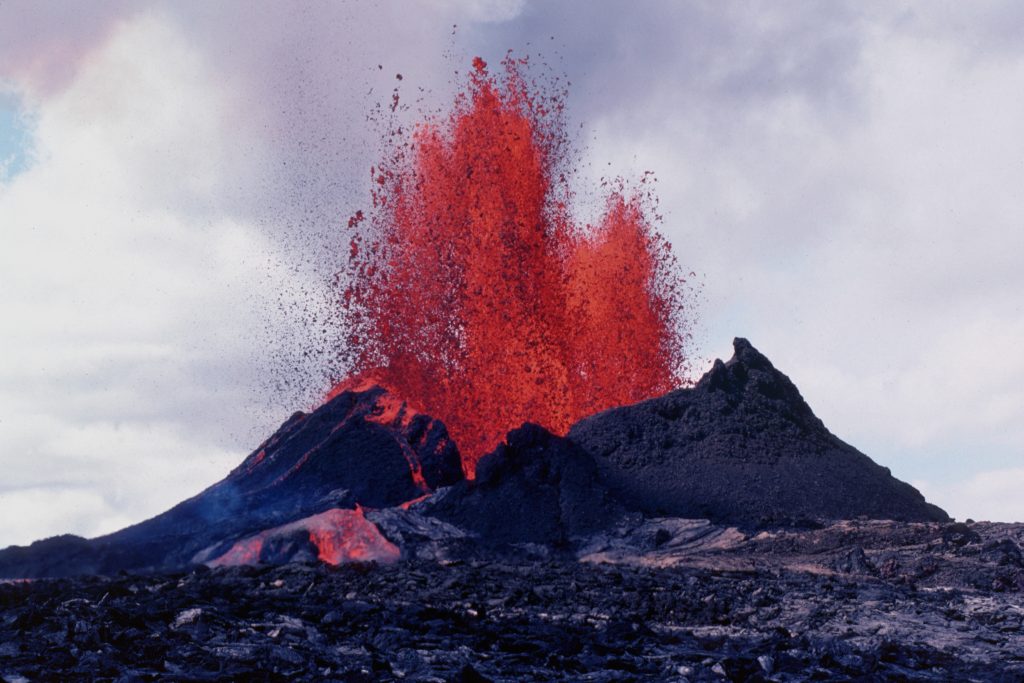The Rocky Earth
The bulk of Earth’s mass is rock and metal that is differentiated into layers of different density, like the Sun. We can determine some of the structure of the interior of Earth by monitoring seismic waves all across the surface. As the waves pass through the planet we can measure them on the surface and infer how they moved, reflected, and refracted. We can also observe materials from the interior deposited on the surface by volcanoes.
At the center of the Earth is a huge core of mostly metallic material: iron and nickel, along with sulfur. It’s nearly 7,000 km across. The innermost part of the core (diameter of 2,400 km) appears to be solid. But above that, an outer core layer nearly 2,300 km thick is in a liquid state. The heat generated by radioactive decay of trace heavy elements like Uranium throughout Earth’s interior provides much of the heat to keep the outer core liquified.
Above the core is a rocky mantle, nearly 2,900 km in thickness. It is mostly solid, but it’s warm enough to be malleable so that it flows over long periods of time. Heat travels out from the core through the mantle via convection currents. The rock mantle ever so slowly churns, mixing the deep rock with the shallow rock.
Sitting atop the mantle is a rocky crust that is fractured into several large plates. These plates move around the surface of Earth, crashing into each other, rubbing against each other and pulling away from each other. Some plates are more dense than others, so they float on the mantle lower than the other parts. These lower sitting plates form large basins that liquid water fills in to form an ocean. We call these denser plates, oceanic plates, and the plates that float higher on the mantle and stay above the ocean level are called continental plates.
The movement of these so-called tectonic plates gives rise to earthquakes and the faults at the plate boundaries are the typical locations for earthquakes and volcanoes. Mountain ranges and oceanic trenches are also features found at the plate boundaries. The plates can be dragged down into the mantle and replaced by fresh material, which makes the surface of Earth very dynamic over long periods of time.
The circulation of liquid iron and nickel in Earth’s outer core creates a circulating electrical current, which generates a global magnetic field that is roughly aligned with the spin axis of the planet. The history of the magnetic field is written into the ocean floor, especially in the mid-Atlantic where two plates are separating and liquid magma rises up to form a huge mountain range called the mid-Atlantic ridge. The fresh rock contains iron that aligns with Earth’s magnetic field as it cools. So when we measure the magnetic field in the rocks close to the center of the ridge we get a record of the recent strength and direction of the magnetic field. As we take measurements farther away from the center of the ridge, we get a record of the past history of the magnetic field stretching back a billion years. We see that Earth’s magnetic field has been very dynamic, even flipping polarity from time to time. How this happens remains a major mystery of Earth’s interior.
Activities
Hands-On
Online



